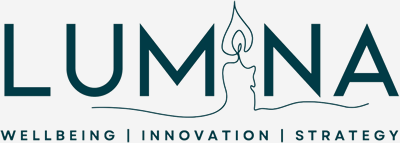This week, I found myself grappling with fatigue. It was just a little reminder from COVID, telling em “I am still here and don’t you forget it!! ” I never will I tell you.
Recognising this, I decided to step back as the week wrapped up, taking some much-needed time to recharge and reflect at Riversdale Beach.
There, with the sound of waves as a backdrop, I started to think deeply about the evolving needs of our workplaces. As organisations adapt to new tools and shifting dynamics, there’s a growing focus on well-being – and rightly so. But are we truly addressing the underlying factors that impact stress and workload, or are we simply skimming the surface? In our rush to evolve in areas like technology and communication, it’s all too easy to forget the people behind these changes, those who ultimately power them. Ignoring the human element only exacerbates stress and workload, creating environments where burnout becomes inevitable.
As I reflected on this, it became clear that we need to reassess our approach to supporting workplace well-being. It’s not just about checking boxes on mental health initiatives or introducing the latest technology; it’s about fostering an environment that genuinely prioritises people. This requires a conscious effort to balance progress with compassion, to remember that the well-being of our teams is what sustains any organisation over the long term.
Technology and Human-Centric Change
Let’s talk about technology for a moment. Technological advancements are reshaping how we work – from streamlined workflows to instant communication and remote collaboration. These are tremendous tools, but they come with a caveat. As we move forward in these areas, we can’t lose sight of the individuals using these tools. Each shift, each upgrade, adds an unspoken expectation on people’s time and energy. Without adequate support, these advances can inadvertently increase stress, leading to a greater sense of disconnection rather than productivity.
To prevent this, we must approach tech integration with a human-centric mindset. Are we giving people the support they need to adapt to new systems? Are we considering how these changes impact their day-to-day roles and overall well-being? Addressing these questions can make the difference between creating a thriving workplace and one where stress quietly festers beneath the surface.
Rethinking Stress and Workload
Beyond technology, there’s the pressing issue of workload. In our culture of productivity, it’s common to see people stretched to their limits, juggling multiple projects and facing tight deadlines. Yet, often we equate “busy” with “productive,” overlooking the impact this has on mental and physical health. Just as important as getting the work done is ensuring that our people are well-equipped and empowered to handle their responsibilities without feeling overwhelmed.
Rethinking stress and workload means taking an honest look at what we’re asking of our teams. Are we fostering an environment where people feel valued, or are we unintentionally reinforcing a culture of constant pressure? Creating boundaries around workloads and expectations is crucial. This might mean setting realistic goals, offering mental health days, or simply fostering open conversations where people feel safe to voice their concerns. Small shifts in how we view and address workload can make a lasting impact on the well-being of our teams.
Cultivating a Collaborative and Balanced Workplace
A healthy workplace culture goes hand-in-hand with collaboration. It’s easy to forget that productivity isn’t a solo endeavour; it thrives on teamwork and the exchange of ideas. Encouraging collaboration doesn’t just mean putting people in the same room; it’s about creating an atmosphere where every voice is valued and every contribution matters. When people feel heard and appreciated, they’re more likely to be invested in their work and less likely to feel isolated or overburdened.
Similarly, work-life balance has become a buzzword, but achieving it requires action beyond policy statements. It’s about creating genuine flexibility, respecting people’s time, and recognising that work is just one part of their lives. By encouraging work-life balance, we’re not just supporting well-being; we’re fostering a culture where people can bring their best selves to work every day.
Embracing Calm and Prioritising People
In our fast-paced world, calm might seem like a luxury, but it’s an essential ingredient for sustainable productivity. By prioritising calm, we create a ripple effect – one that promotes thoughtful decision-making, clear communication, and a sense of stability that permeates the entire organisation. It’s about setting a pace that allows people to thrive rather than survive.
Reflecting on these ideas at Riversdale Beach reminded me of the importance of aligning our workspaces with the values that support our well-being. Change is inevitable, but we have a choice in how we approach it. We can embrace it with mindfulness, ensuring that as our workplaces evolve, they continue to be places where people feel valued, supported, and encouraged to grow.
To create a workplace where everyone thrives, we need to:
Collaborate: Encourage team-based problem-solving and shared responsibilities to build a supportive culture.
Prioritise Work-Life Balance: Implement genuine flexibility and respect for personal boundaries, recognising that well-being is tied to more than work alone.
Foster Calm: Move towards a calm and steady pace, allowing for thoughtful work rather than reactionary responses.
By embedding these principles into our workplaces, we’re not only addressing the challenges of stress and workload but also laying the groundwork for a culture where every individual can flourish. After all, a thriving workplace isn’t just about keeping up with change; it’s about ensuring that change uplifts everyone within it.
So, as you go through your week, take a moment to consider: How can you bring a little more calm into your day? Where can you advocate for balance or create space for collaboration? These small changes can be powerful steps toward building a workplace where well-being is more than just a goal – it’s a reality.
